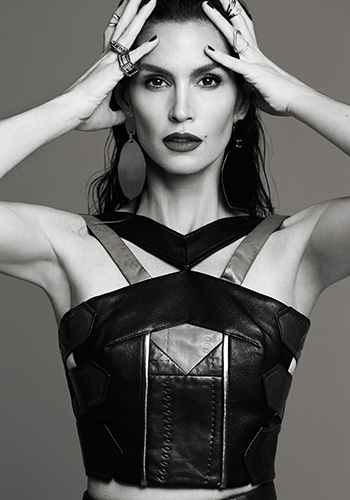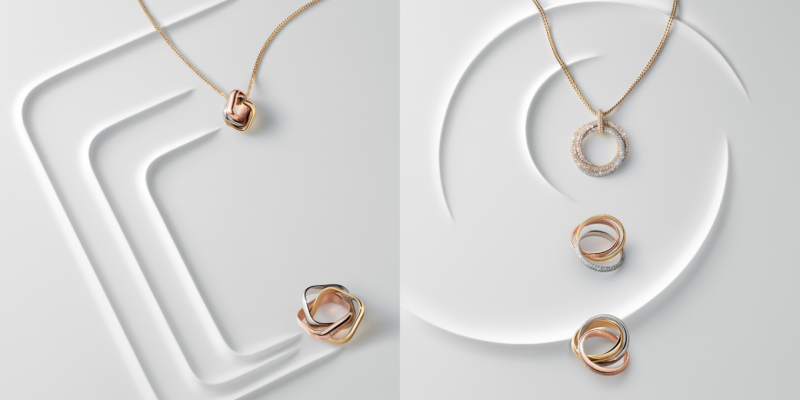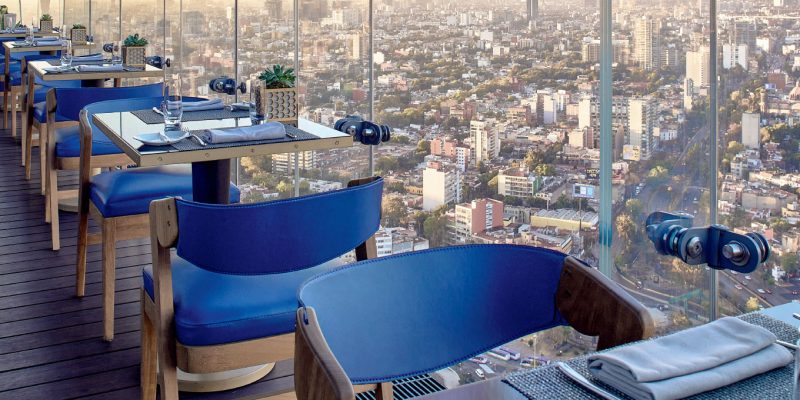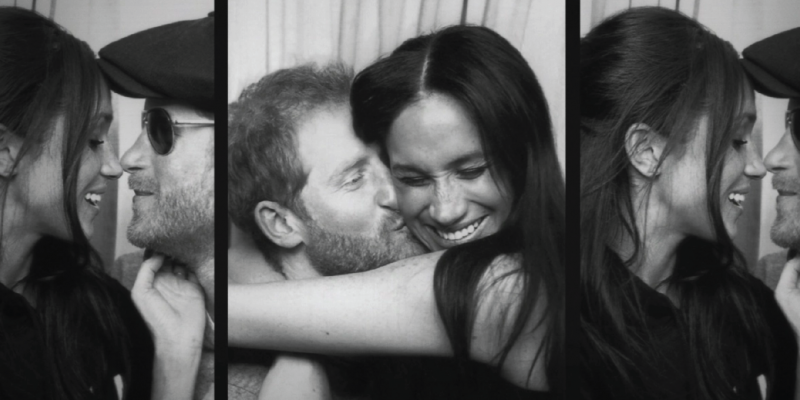Celebrity
12 life lessons from Cindy Crawford
The ultimate supermodel shares a few things she's learned along the way.
by : Noreen Flanagan- Sep 1st, 2015

We are all distracted with last-minute preparations for the shoot when Cindy Crawford walks quietly into the L.A. studio and makes her way to our frenzied huddle. “I’m sorry for being late,” she says, looking a little flustered. “I had problems finding parking.” Late? We are 10 minutes behind schedule at best, but that’s not because of her.
Several weeks later, Crawford once again shows her famous commitment to punctuality and politeness when we reconnect over the phone. “Thanks for pushing the call back 30 minutes,” she says immediately. “Both of my kids are being home-schooled this year so they’re around a lot, which means there’s no Mom off-time!” Crawford then explains that she pulled her two teenagers out in protest because she wasn’t satisfied with how the school handled the removal of PCBs from the building. “I can’t say that this is a bad thing and then send my kids there,” she says. “It’s one of those times when having a little bit of celebrity helps to bring attention to an issue.”
A “little bit of celebrity” is a charming understatement, given that she’s the most famous—and successful—member of the ’90s supermodel pack. Her career, as both a model and a businesswoman, fundamentally changed the way today’s top h models approach their work. From her early days as a catalogue model in Chicago to today on our set, Crawford’s reputation for professionalism is on show. The moment she emerges from hair and makeup wearing a thigh-high Fausto Puglisi dress, Crawford is ready to work. Only 15 minutes into the shoot, we get our cover shot. “She just gets it,” says photographer Max Abadian. “The dress, the pose—the attitude. She’s amazing.”
READ MORE: The 25 most popular supermodels of ALL TIME
We decide to go live with the cover shoot and post a short clip of Crawford working her angles on Instagram. Someone quickly responds: “Good lord. Shivers watching. Legend at work.” It’s what we’re all thinking.
Annett Wolf, her long-time publicist, arrives and nods her approval of the shots. “There’s no one like her,” says Wolf. “She has been so clever with her career and her life.” Crawford, who turns 50 this February, finally agreed to chronicle some of that amazing life in Becoming, a book she’s releasing this fall with Rizzoli.
Over lunch with the crew, Crawford tells us that it’s not an autobiography, because she wasn’t interested in doing a tell-all book, and it’s not a makeup-and-exercise book. “It’s about reflecting on the lessons I’ve learned based on the experiences I’ve had and the people I’ve met who all helped me become ‘Cindy Crawford.’”
Those people include Roger Legal, a photographer from her hometown of DeKalb, Ill., whom she credits with kick-starting her modelling career, as well as legendary lensmen like Richard Avedon, Helmut Newton, Steven Meisel and Herb Ritts, who captured her most iconic images. She also writes about the origin of the ’90s supermodels, her lucrative endorsement deals with Revlon and Pepsi and how she eventually took control of her career with her business ventures—everything from fitness videos and swimsuit calendars to her Meaningful Beauty line.
READ MORE: Cindy Crawford’s most iconic runway moments
“I had the courage to take on this book project because I did Oprah’s Master Class series,” Crawford explains. “When I was first asked to do the program, I was intimidated because there were women like Maya Angelou involved and I thought, ‘Oh, my God, what am I going to say? How am I going to be able to find lessons that are applicable to other people—even though they’re not models?’ What’s brilliant about the way they do that show is that they help you find those lessons. After it was done, I thought, ‘Wow, I have learned a few things; this life does add up to wisdom and knowledge.’”
During our one-hour conversation, Crawford shares some of those defining moments, starting with the one she describes as the most life changing.
Lesson N˚1: Take nothing for granted.
When Crawford was eight years old, her two-year-old brother, Jeff, was diagnosed with leukemia. Two years later, he passed away. “When my brother died, it was a huge loss, but it also fuelled me. There are always two sides to these kinds of experiences. I learned at a very young age not to take life for granted.”
Lesson N˚2: It’s important to be strong, but it’s okay to be vulnerable too.
After her parents separated, Crawford remembers watching her mother sometimes have to plead with her father for money to support the family. “When my parents got divorced, I felt then that I always wanted to be able to take care of myself. But sometimes when you have that attitude, you come off as ‘Hey, I don’t need anybody!’ and that’s not attractive to men. Men want to feel needed and appreciated. I’ve had to learn how to allow myself to be vulnerable.”
Lesson N˚3: Life isn’t a fairy tale.
Crawford was 25 when she married Richard Gere in 1991. They divorced in 1995. “The other defining moment in my life was the end of my first marriage. It was like a fairy tale. You’d think I would know that the fairy tale wasn’t true because I’d lost my brother and my parents had got divorced, but we all want to believe in the movie version of love. It was crushing, and it made me realize that I had to look at relationships realistically. You have to put that vanity version of a relationship aside—that’s like playing dress-up. I went to a relationship therapist and she asked me a great question: ‘Are you looking for a soulmate or a husband? They’re not necessarily the same thing. A husband is the guy who is solid, and you know you want to have children with him and you know he’s going to be there.’ In my younger years, I was attracted to the more intense kind of relationships that are very draining. When I was first with Rande, I thought he was so solid, but then I wondered ‘Wait, where’s all the drama? Maybe this isn’t good. Maybe this isn’t real!’ The relationship therapist helped me to appreciate the solidity—the foundations. I’ve been with Rande for close to 20 years, and he’s now my soulmate. We were able to grow together.”
Lesson N˚4: Know your truth.
In 1993, Crawford was photographed shaving k. d. lang for the cover of Vanity Fair. It fuelled the public’s obsession with her marriage and her sexuality. In 1994, Crawford and Gere published an ad in The Times of London asking for the press to be “responsible, truthful and kind.” “My ex-husband would say ‘If people call you a cow and you know you’re a giraffe, you’re still a giraffe.’ You should know your own truth, and I think you should live your truth. You’re not going to change what people think.”
Lesson N˚5: Be ready when you decide to put yourself second (or third!)
In 1998, Crawford married Rande Gerber. The couple had their son, Presley, in 1999 and their daughter, Kaia, in 2001. “My mom was very young, and that worked out great, but for me it was great that I wasn’t a young mother. I was able to be selfish with my time in my 20s—to try to figure who I was and what I wanted. When I did finally have kids, I was ready to put myself second, or third, or fourth…. All of a sudden, your priorities just change. I was ready to let something else be the focus.”
Lesson N˚6: Balance your life (or at least try to).
When Crawford was a full-time model, or later when she managed her business ventures, like Meaningful Beauty and Cindy Crawford Home, she says she struggled to have it all. “I think some of my biggest fails happen when I don’t take the time to really listen to what my kids, or my husband, are saying. You say the wrong thing, or you say it at the wrong time. Later I think ‘I could have handled that so much better if I had just slowed down.’ My New Year’s resolution every year is to say ‘no’ more often to commitments. We all over-commit. We don’t have the time to just be.”
Lesson N˚7: Know when to say yes!
When Crawford entered the modelling world in the ’80s, she was exposed to a wild party scene and OTT personalities like Janice Dickinson. “The first time I went to Rome when I was a model, I went to a party and Janice was dancing on the table. I was 18 and fresh out of the cornfield and I was like ‘I’m not ready for this!’ Over the years, whenever I’d been invited to Versace’s place or Armani’s boat, I’d say no because I didn’t want the pressure of being Cindy Crawford 24-7. Then about 10 years ago, some friends, whom I didn’t know very well, invited Rande and me to their boat in the south of France. We went and had a fantastic time. After lunch, we were dancing on the table! That just wasn’t who I was as a young woman. The reason I allow myself now is because I know Rande has my back. Rande will tell me when it’s time to get down off the table.”
Lesson N˚8: Photography is an art.
It has become fashionable—as well as political—to post #nofilter or #nophotoshop images online. “There’s not a single picture, even an unretouched one, that hasn’t been edited. It depends on the lighting; it depends on where the photographer puts the camera; it depends on the exposure. There’s no such thing as a real photograph. Photography is an art; it’s about the editing.”
Lesson N˚9: It’s okay to use filters!
Whether you’re a celebrity or not, there’s a certain social pressure to post images tagged #nomakeup or #loveyourlines. “I can have no makeup on and do a selfie in great lighting or ugly lighting. If I choose good lighting, is that bad? It goes back to what is real. If someone wants to wear makeup and that makes them feel good, fantastic. If they feel great with nothing on, that’s fantastic too. If someone wants to use a filter, that’s fine—I would! Even some of those people who say ‘Hey, I love my lines’ probably took five pictures of themselves and chances are they picked the one that they think looks the best. To me, that kind of editing is the art. And putting on a filter is an art—just like hair and makeup. Do I think that sometimes retouching is abused? Yes, but if an artist paints a woman who has acne and he chooses not to show that, is that inauthentic? Is that not art anymore? To me, it’s the same with photography.”
Lesson N˚10: When life blindsides you, say nothing (at least at first).
Last February, a news anchor for the U.K.’s ITV News posted what she suggested was an unretouched image of Crawford taken from an old shoot with Marie Claire. It became a viral sensation. “I felt that [the journalist] was inauthentic because she acted like this was great but she didn’t check if I wanted this out or if it was a real picture. Why would seeing a bad picture of me make other people feel good? I felt blindsided. I was very conflicted, to be honest. The story had run a year and a half before, and the picture of me in that outfit was from the bust up. I know my body, and I know it’s not perfect, but maybe I have a false body image; maybe I think I look better than I do. I think that most women are hard on themselves. We think we look worse than we do. So I assumed I fell into that category, even though that picture didn’t reflect what I saw when I looked in the mirror—even in the worst dressing-room lighting. We spoke to the photographer, and he was very upset because he didn’t put it out there. He said: ‘Cindy, I’m going to send you the real one and it’s nothing like that. It’s clear that someone manipulated that image to make whatever was there worse.’ It was stolen and it was malicious, but there was so much positive reaction [to the image]. Sometimes, the images that women see in magazines make them feel inferior—even though the intention is never to make anyone feel less. So somehow seeing a picture of me was like seeing a chink in the armour. Whether it was real or not isn’t relevant, although it’s relevant to me. I don’t try to present myself as perfect. It put me in a tough spot: I couldn’t come out against it because I’m rejecting all these people who felt good about it, but I also didn’t embrace it because it wasn’t real—and even if it were real, I wouldn’t have wanted it out there. I felt really manipulated and conflicted, so I kept my mouth shut.”
Lesson N˚11: When life blindsides you, find a teachable moment.
“This is exactly the type of thing that I wouldn’t want my daughter to do to another girl online. It’s social bullying. I’m a big girl and I can handle it, but I used it as a teaching lesson for my own daughter because my kids were like ‘Mom, you don’t look like that!’ They wanted me to go down to the beach in a swimsuit so the paparazzi would take a photo of me, but that would be playing into it. How do I rise above the situation? What do I do? Go on Good Morning America and pull up my shirt and say ‘I don’t look like that’? That didn’t seem like the right response.”
Lesson N˚12: Have no regrets.
“Even the times I failed were the best lessons.”
READ MORE:
Newsletter
Join our mailing list for the latest and biggest in fashion trends, beauty, culture and celebrity.
More from Celebrity
Read Next

Fashion
Cartier Celebrates 100 Years of the Trinity Ring
What better way to celebrate an anniversary than with a new collection?
by : Allie Turner- Apr 19th, 2024

Culture
How to Spend 48 Hours in Mexico City
Where to discover the hidden gems—markets, mezcal, modern art—of the Central American capital.
by : Jennifer Nguyen- Apr 18th, 2024

Culture
This University Elevates Women to New Professional Heights
You shouldn’t have to pause your life to move forward in your career.
by : ELLE Canada- Apr 16th, 2024




